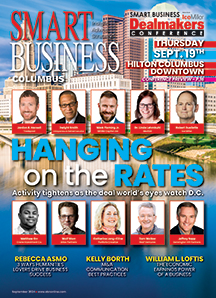Balance stimulation and spending
Balancing supply and demand can be tricky when you’re making a comeback. But it’s even more challenging when you’re trying to meet rising demand with outdated equipment and limited financial resources.
“The biggest risk you face when you stimulate the market is not being able to deliver,” Greggor says. “You can’t go from zero to 100 overnight, so I strive to balance stimulation with spending.”
To that end, he identified the brewery’s impediments to growth and prioritized investments in people and technology that promised to increase capacity and profits.
For instance, when he discovered that the brewery’s 38-year-old filler was losing 5 percent of product during the bottling process and breaking down every other day, he purchased a $1 million state-of-the-art machine.
The new filler not only reduced product loss to an acceptable 0.5 percent, it improved quality by reducing residual oxygen by 90 percent.
“The new filler is a lot faster, so we can bottle more beer with the same number of people, which increases our capacity,” he says. “Investments like these make sense because they help you keep your promises to consumers. The inability to produce can hurt your momentum when you’re trying to rebuild a brand.”
Although Greggor wanted to introduce new products right off the bat, he waited two years, until Anchor Steam beer regained its footing, before test marketing and launching Anchor California Lager.
“We introduced it on a small scale in California and gauged people’s reactions to make sure our new product was right for our brand,” he says. “It’s the prudent way to go when you’re turning the corner. You can’t afford any setbacks.”
Finally, in 2013, Greggor took steps to expand Anchor Brewing’s operations by becoming the first major tenant of the Mission Rock Project, which is being developed by the San Francisco Giants. The additional marquee location will not only increase capacity, but strengthen the relationship between the two legendary brands.
When it comes to balancing stimulation with spending, Greggor says CEOs shouldn’t strive for perfect timing. He maintains that batting 90 percent is good enough.
“If I had to choose, I’d rather have more demand because you can always pull levers to increase supply,” he says. “Just make sure you don’t damage your relationship with customers or diminish their faith in your product when you’re rebuilding because it’s hard to repair a broken brand.”
Takeaways:
- Own your own backyard before you expand.
- Link your brand with your business strategy.
- Increase capacity and profitability by balancing stimulation with spending.

